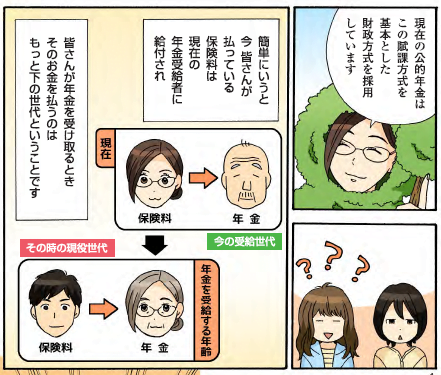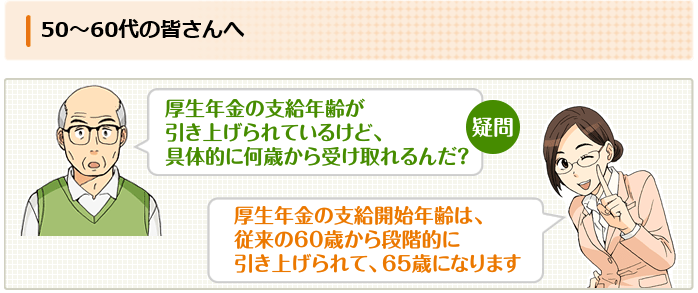As soon as they turn 20, Japanese people have to make monthly contributions to the kokumin nenkin kikin seido, which is the contribution system to fund the retirement of the elderly.
However, a large part of the Japanese youth does not understand how the financing system for retirement works, nor do they understand its utility. Therefore the Japanese Minister of Health, Work and Welfare invested 16 million of yens in an information campaign. One of the main tools of this campaign is a manga that explains to youth the way the contribution system for retirement works.
Explaining the functioning and “philosophy” of the Japanese retirement system
The series is divided in 11 episodes. It’s been published online since May 2014. Since this January, the website on which the manga is published records 1.000 visits per day. In this manga, an estate agent named Kaneko Toshi visits a family in which three generations live together. She explains how the retirement system works.
The manga does not only explain the mechanics but the economic philosophy of the Japanese retirement system as well, in which active people can contribute to the revenues of retired people. The retirement cycle is depicted as a cycle: those who financially contributed to fund retirements in the past are “supported” today by younger generations, who themselves will be supported by following generations when they reach retirement. In order for the cycle to work properly, there has to be enough new active adults to fund the system.
Negative reactions surround the manga 
Reactions surrounding the manga are quite negative especially because of its final episode. In the last episode, the agent estate Kaneko Toshi talks to the girls of the family: the elder one works but is single and the younger one is a student. She tells them the birth rate is Japan weakens the system. The elder sister then says she should get married and have “many kids”. Kaneko Toshi, who is also single, takes the elder sister with her to a meeting even so they can find husbands.
Thousands of tweets were posted to complain about the series: many women felt offended by the implications of the manga as they understood the Japanese government wanted them to marry and give birth to fill the gap between generations that weakens the retirement system. A tweet that said the manga “clarified the social role of women” according to the government was shared more than 2.000 times.
Published by the Editorial Staff on

